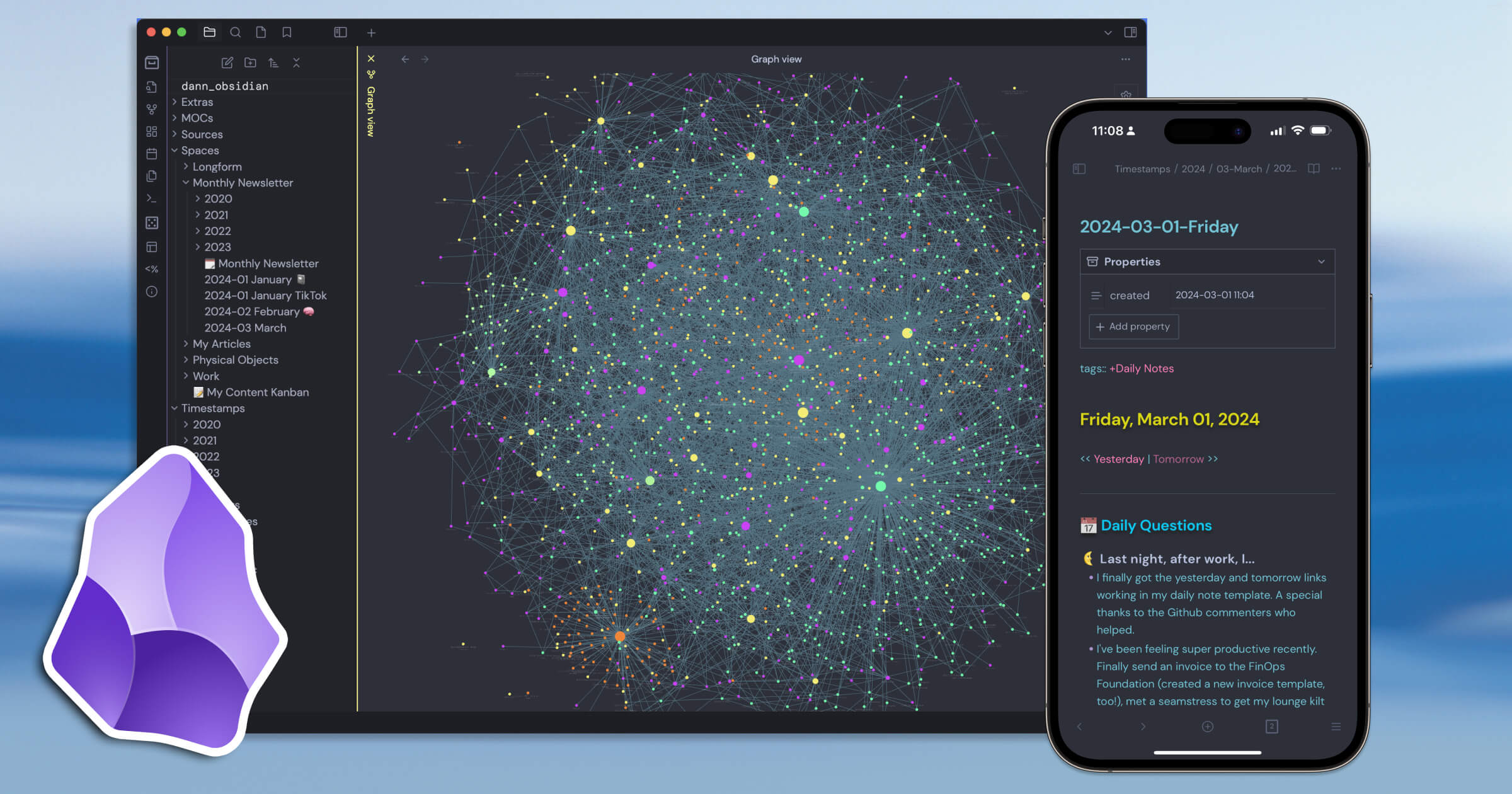Obsidian's Backward-linking Feature For Productivity

Categories:
4 minute read
Obsidian’s backward-linking feature, also known as bidirectional linking, is one of its standout capabilities that significantly enhances the note-taking and knowledge management experience. This feature allows users to create links between notes in both directions, meaning that when you link to another note, that note automatically recognizes the link back to your original note. Here are some key advantages of using this feature:
- Enhanced Contextual Understanding
Backward linking provides immediate context for users by showing how different notes relate to one another. When you view a note, you can see all the other notes that link back to it. This interconnectedness helps users understand the broader context of their ideas and how they fit into their overall knowledge base. For example, if you have a note on “Machine Learning,” any notes that reference it—such as “Neural Networks” or “Supervised Learning”—will be easily accessible, allowing for a more comprehensive understanding of the topic.
- Discovery of New Connections
The ability to see unlinked references encourages users to discover new ideas and connections that may not have been initially obvious. As you write and link notes, Obsidian can suggest potential links based on existing content, prompting users to explore related concepts they might not have considered. This can lead to unexpected insights and a richer understanding of the subject matter, effectively acting as a catalyst for creativity and innovation in thought processes [2][4].
- Improved Navigation
Navigating through a web of interconnected notes becomes seamless with backward linking. Users can easily jump between related topics without losing their train of thought. For instance, if you’re reading about a specific concept and want to see how it relates to others, you can quickly access all linked notes through the backlinks pane. This fluid navigation helps maintain focus and enhances productivity by reducing the time spent searching for related information [2][3].
- Building a Personal Knowledge Graph
Obsidian’s graph view visually represents the connections between notes, allowing users to see their knowledge graph in action. Each note appears as a node, with lines connecting related concepts. This visualization not only helps in understanding the structure of your knowledge but also highlights areas where further exploration or linking might be beneficial. It transforms your notes into a dynamic network rather than isolated pieces of information [4][6].
- Facilitating Comprehensive Review
Backward links make it easier to review and synthesize information across multiple notes. When preparing for a project or writing an article, you can quickly gather all relevant materials by checking which notes link back to your main topic. This comprehensive view supports better synthesis of ideas and aids in creating well-rounded content [2][5].
- Encouraging Consistent Updates
With backward linking, any changes made in one note are reflected in all linked references. If you update a concept or idea in your primary note, those changes will automatically be recognized in any other note that links back to it. This ensures that your knowledge base remains consistent and up-to-date without requiring manual adjustments across multiple documents [3][5].
- Supporting Non-linear Thinking
Obsidian’s backward-linking feature promotes non-linear thinking by allowing users to connect ideas freely without adhering to a strict hierarchical structure. This flexibility is particularly beneficial for brainstorming sessions or creative writing, where ideas often flow in unpredictable directions. Users can create links as thoughts arise, facilitating an organic development of concepts over time [1][4].
Conclusion
Obsidian’s backward-linking feature is a powerful tool for enhancing note-taking and knowledge management practices. By fostering contextual understanding, encouraging discovery of new connections, improving navigation, building personal knowledge graphs, facilitating comprehensive reviews, supporting consistent updates, and promoting non-linear thinking, this feature significantly enriches the user experience.
For anyone looking to deepen their understanding of complex subjects or streamline their writing process, leveraging Obsidian’s backward-linking capability can transform how information is organized and utilized—making it an invaluable asset in personal knowledge management systems.
Citations: [1] https://forum.obsidian.md/t/reverse-autolink-or-link-as-you-type/18359 [2] https://brianchristner.io/how-obsidian-became-my-supercharged-second-brain/ [3] https://jamierubin.net/2022/02/08/practically-paperless-with-obsidian-episode-17-six-ways-i-use-note-links/ [4] https://plaky.com/blog/obsidian-vs-notion/ [5] https://productive.io/blog/notion-vs-obsidian/ [6] https://ewpratten.com/blog/obsidian-blogging/ [7] https://www.youtube.com/watch?v=HbKrVusUZYs [8] https://www.reddit.com/r/ObsidianMD/comments/14hgxz5/when_to_use_tags_vs_backlink/
Feedback
Was this page helpful?
Glad to hear it! Please tell us how we can improve.
Sorry to hear that. Please tell us how we can improve.